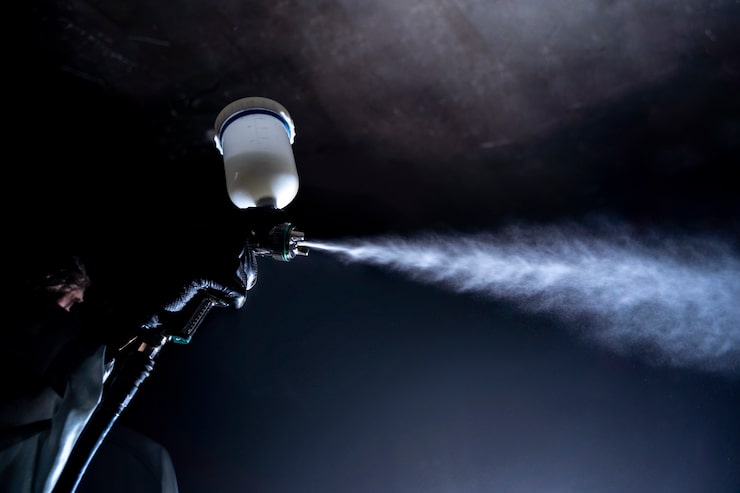Understanding what is ESD powder coating is essential for industries and manufacturers aiming to protect sensitive electronic components and devices from static electricity damage while providing durable and aesthetically pleasing finishes. ESD powder coating stands for Electrostatic Discharge powder coating, a specialized coating method designed to dissipate static electricity safely, thereby preventing the buildup of static charges that can cause harm in sensitive environments.

At its core, what is ESD powder coating involves applying a powder coating that contains conductive or dissipative materials. These materials allow the coating to carry electrical charges away from the surface, reducing the risk of electrostatic discharge events. This is crucial in industries such as electronics manufacturing, aerospace, medical devices, and cleanroom environments where static electricity can damage components, ignite flammable substances, or disrupt sensitive equipment.
The process of ESD powder coating starts similarly to traditional powder coating techniques. A dry powder, often a thermoset polymer infused with conductive additives like carbon black or metallic particles, is electrostatically sprayed onto a grounded conductive substrate. Because the powder particles are charged, they adhere uniformly to the surface. After application, the coated item is cured under heat, causing the powder to melt, flow, and chemically bond to form a hard, continuous film.
However, unlike standard powder coatings, what is ESD powder coating distinguished by its ability to manage electrical conductivity. This means the final coating is engineered with specific resistivity levels that allow static electricity to dissipate at controlled rates. Coatings can be designed with different surface resistivity values, typically measured in ohms per square, depending on the required level of static control for the application.
The significance of what is ESD powder coating lies in its protective function beyond just physical or chemical durability. In environments where electronic parts are assembled or handled, static discharge can cause immediate failure or latent defects that lead to malfunction later. By using ESD powder coatings on work surfaces, equipment housings, or storage racks, companies can drastically reduce the risk of electrostatic damage.
Moreover, ESD powder coatings maintain the environmental advantages inherent to powder coating technologies. They are free from solvents, produce minimal volatile organic compounds (VOCs), and generate little waste due to the recoverability of overspray powders. This makes ESD powder coatings a sustainable option that complies with environmental regulations and workplace safety standards.
From a mechanical perspective, what is ESD powder coating offers excellent resistance to abrasion, corrosion, chemicals, and UV exposure. This ensures that the conductive properties of the coating remain intact even under harsh operational conditions. The coatings are available in various colors and finishes, providing both functional and aesthetic benefits, which is valuable for product branding or ergonomic considerations.
It is important to highlight that the performance of ESD powder coatings depends heavily on precise formulation and application techniques. Factors such as the type and concentration of conductive fillers, powder particle size, curing temperature, and coating thickness all influence the final electrical and mechanical properties. Manufacturers often work closely with suppliers to tailor coatings to specific industry standards such as ANSI/ESD S20.20 or IEC 61340-5-1.
Despite its many advantages, what is ESD powder coating also requires understanding some challenges. The necessity of conductive substrates or primers means it is mainly applicable to metal surfaces or specially prepared materials. Non-conductive substrates might need additional treatments before coating. Additionally, specialized equipment and quality control measures are essential to ensure consistent conductivity and coating performance, which might increase initial production costs.
Technological advancements continue to evolve the field of ESD powder coatings. New hybrid formulations combining conductive polymers with nanomaterials aim to enhance conductivity while reducing weight and cost. Automated and robotic application systems improve coating uniformity and throughput, benefiting mass production environments. Furthermore, ongoing research explores eco-friendlier conductive additives to further improve the sustainability profile of these coatings.
For industries dealing with sensitive electronics, what is ESD powder coating represents a critical solution to safeguarding their products and ensuring operational reliability. It allows companies to meet stringent safety standards, reduce warranty claims related to static damage, and extend the lifespan of their equipment. Applications span from protective enclosures and control panels to packaging materials and cleanroom furniture.
In conclusion, what is ESD powder coating is a specialized powder coating technology designed to prevent harmful static electricity buildup through controlled electrical conductivity. It combines the durability and environmental benefits of traditional powder coatings with unique electrostatic discharge properties. By understanding its principles, advantages, and application nuances, manufacturers can leverage ESD powder coatings to protect sensitive equipment, enhance safety, and maintain compliance with industry standards in a sustainable and efficient manner.


